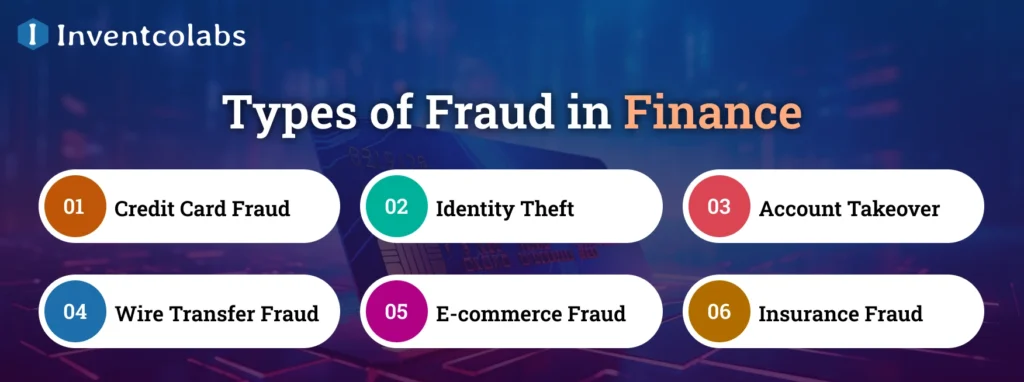Financial fraud is regarded as one of the most significant threats that current institutions have to deal with. This means that with the fast-growing use of digital transactions, online banking, and mobile payments, fraud has become more rampant. To overcome these threats, companies and banks are now using financial fraud detection software that is driven by artificial intelligence. This approach has been more efficient than conventional methods, preventing losses, safeguarding clients, and improving confidence in online transactions.
What is Financial Fraud Detection Software?
Financial fraud detection software is a professional tool that is used mainly for the identification of fraudulent activities, as well as for the prevention and counteraction of financial fraud. With the help of machine learning, artificial intelligence, and big data analysis, it helps financial institutions to detect any sort of novelty or unwanted activities that can lead to fraud. These systems become more significant as the number and the variety of financial transactions expand due to the development of online banking and e-commerce.
The market of financial fraud detection software is quickly evolving and based on the projections, it will reach from $17.18 billion in 2024 to $28.95 billion in 2028 with a CAGR of 13.9%. This growth has been propelled by the rising uptake of digital payment systems and the ever-growing number of cyber incidents. The North American market is dominant at the current time, but the Asia-Pacific region is predicted to show the highest growth in the future years.
Types of Fraud in Finance

1. Credit Card Fraud
Credit card fraud involves a situation whereby an unauthorized individual uses another person’s credit card number to make purchases or withdraw cash. Credit card fraud detection systems employ machine learning techniques for identifying certain anomalies in the transactions, for example, transactions in different geographical regions or large transactions. These credit fraud detection systems are vital for businesses, to reduce the risk of fraudulent transactions and to maintain customer confidence, especially for the online business.
2. Identity Theft
Identity theft occurs when one imitates another person’s identity to carry out unauthorized transactions including the use of a victim’s other details like Social Security Number (SSN) or account numbers. Machine learning systems used in detection for financial fraud can identify that certain actions such as opening new accounts or changes in personal details are peculiar. Banks require fraud prevention solutions to minimize losses and to ensure their clients’ personal information is not compromised.
3. Account Takeover
Account takeover includes taking control of another person’s account to perform fraudulent transactions. Phishing attacks or malware is usually used by fraudsters to get login credentials. By identifying patterns in users’ behavior, machine learning models are able to identify fraudulent detection; for instance, persons logging in from strange locations or making several transactions at once. Fraud detection software for banks is designed to constantly monitor and notify the bank of suspicious activities that may lead to this kind of fraud, thus minimizing its impact on the financials.
Read More : A Comprehensive Guide of AI’s Impact on Banking – Benefits, Use Cases, and Inspiring Applications
4. Wire Transfer Fraud
Wire transfer fraud is a type of cyber fraud where the attacker creates an illusion of credibility and convinces the victim to transfer money to a particular account. Very often, the attackers simply intercept the messages or, even worse, pretend to be somebody else. Fraud analytics allow machine learning models to scrutinize transaction behaviors and identify suspicious requests. Wells Fargo fraud detection systems incorporate these technologies to prevent fraudulent transfers and safeguard the customer’s money.
5. E-commerce Fraud
E-commerce fraud relates to the unauthorized use of other’s credit/debit cards or taking advantage of vulnerabilities in an e-commerce site. This type of fraud may involve Card-not-present (CNP) transactions and fake refund claims. Ecommerce fraud prevention systems that are based on machine learning can monitor characteristics such as multiple failed attempts, or an odd shipping location. For instance, Amazon fraud detection employs such solutions to mitigate losses and safeguard both the consumers and sellers from being scammed.
6. Insurance Fraud
Insurance fraud means making a claim for which one has no right to be paid. This can include faking an accident to even overemphasize the injuries they have sustained. Machine learning-based financial fraud analytics can analyze claim data using usual claims and historical data to identify the presence of fraud. It enables insurers to quickly address the claims while at the same time minimizing fraud.
Benefits of Financial Fraud Detection Using Machine Learning

1. Accuracy and Speed
Machine learning is capable of handling a large volume of data and can analyze the data in real time, hence more accuracy in fraud detection. This means that any illegitimate transaction is likely to be detected within a short time and necessary actions can be taken. Using machine learning, financial fraud detection software is capable of decreasing risks and financial losses more efficiently.
2. Continuous Learning
While the traditional system needs to be updated by professionals based on observations, the machine learning model updates itself based on the new data. Since fraud is a dynamic process, so is the system of fraud detection & prevention, as the former changes, so does the latter. This means that the software continues to learn to counter the newer fraud schemes, thus making it useful.
3. Reduction in False Positives
Rule-based systems used conventionally have high false positive rates, leading to many genuine transactions being labeled as fraudulent. Machine learning reduces this problem to some extent because it offers a better way to discover fraud. This assists financial institutions in tackling customer annoyance and operational expenses while at the same time enhancing the standards of fraud prevention.
4. Scalability
Machine learning models are highly scalable and are capable of processing larger volumes of transactions as businesses grow while maintaining the integrity of financial fraud detection. This scalability is particularly useful in the case of large organizations such as Wells fargo fraud detection as they have to sort through millions of transactions on a daily basis while ensuring the safety of the transactions.
5. Behavioral Analysis
Customer behavior can be preprocessed to identify any unusual patterns that indicate fraudulent activities, by using machine learning. For example, fraud detection bank systems analyze a transaction history, and when they identify that behavior deviates from the norm, then it indicates potential risks. This way of fraud detection is effective in preventing frauds before they occur in the business.
Explore More: Mobile Banking Application Development: How to Create Mobile Banking App?
Overview of Financial Fraud Detection Using Machine Learning vs. Traditional Rule-Based Systems
Conventional methods of preventing and detecting fraud involve a set of rules that are programmed into the system to detect cases of fraud. For instance, an alert can be raised if, and only if, a transaction is more than a fixed amount or takes place in a specific area. Although these systems are relatively simple and may be easily integrated in an organization, they have certain drawbacks. They are always outdated, need frequent updating, and have a high false positive rate; that is, they label many genuine transactions as fraudulent.
Not only does this aggravate clients, but it also results in the incurring of additional expenses for the financial institutions involved. However, machine learning models are more flexible and constantly evolving in their approach. Unlike conventional systems that use a set of rules to guide their decision-making process, machine learning systems use large quantities of data to make decisions in real-time. These models update themselves with new data which leads to them improving in their ability to deliver results.
They are capable of identifying fraud patterns that a conventional system cannot. Moreover, by using machine learning, the number of false positives is minimized meaning that the overall user experience is enhanced.
Machine Learning Models for Fraud Detection
Several machine learning models are widely used for fraud identification:
- Supervised Learning Models: Here, the models are built on datasets where the transactions are classified as either fraudulent and non-fraudulent. Some of the algorithms that are frequently used are Decision Trees, Logistic Regression, and Random Forest. These models are very effective for fraud prevention and detection.
- Unsupervised Learning Models: These models are applied where there is no labeled data. Machine learning techniques including k-Means, and Isolation Forest are used in data mining for anomaly detection and are thus efficient in identifying emerging fraud types.
- Semi-Supervised Learning: It combines a small set of labeled data with a larger set of unlabelled data for training the model. This method can be used to detect fraud in situations where there is little or no labeled data available.
- Deep Learning Models: For the more complex fraud detection, there is a requirement of neural networks and deep learning. These models, commonly used in credit fraud or card fraud are capable of recognizing fraud from an unstructured behavior of the user or the location of the user.
How Does Machine Learning System Work in Fraud Detection?
1. Data Collection
This involves the accumulation of massive transactional data such as customer information, amounts transacted, time, and location. Other data such as the IP addresses and the device details are crucial for enhanced financial fraud detection software.
2. Data Preprocessing
Data collected for machine learning must first be preprocessed depending on the type of data collected. This involves dealing with the missing values, deletion of the duplicate values and encoding of categorical variables. Hence the fraud data analysis is accurate, and the credit card fraud detection systems can be enhanced with clean data for the model.
Read More : Blockchain Platforms for Web3 dApp Development
3. Model Training
The dataset is divided into training and test sets. Decision Trees, Logistic Regression, Neural Networks, etc. are used for training the model of the system. In this phase, the system is trained to recognize patterns of fraudulent transactions, enhancing fraud detection and prevention reliability.
4. Model Testing
After the training is done, the model is then checked for accuracy with unseen data being used for testing. If the system is to be designed to identify fraud detection prevention scenarios, then the performance is measured using precision, recall and F1-score.
5. Deployment and Monitoring
Finally, after the model has been developed and tested, it is released in a production environment. Such kind of monitoring also makes it possible for an organization to scale up its fraud prevention solutions and keep its financial fraud detection system accurate.
Explore More: How to Develop a Blockchain App: Tech and Business Guide
Key Considerations When Using ML for Fraud Detection
When developing a machine learning-based fraud prevention solutions system, there are several important factors to consider:
- Data Quality: Training of the machine learning models requires quality and relevant data. This is because fraud prediction models are only as good as the data you feed them, and if the data is either incomplete or incorrect, the predictions made are equally skewed.
- Regulatory Compliance: The fraud detection systems must be in line with the legal requirements like GDPR and PSD2 or the Revised Payment Service Directive. Financial fraud investigation is a delicate process that involves the handling of large amounts of information that should not be made available to the public.
- Real-Time Processing: Fraud prevention requires it to be carried out in real-time to avoid losses. Machine learning models should be designed to make decisions in a short time.
- Scalability: The system must be able to handle increasing transaction volumes that are expected to occur in the future. This is especially true for Wells Fargo, a large institution that depends on efficient Wells Fargo fraud detection number systems.
Conclusion
Over the years, machine learning has revolutionized how organizations, especially financial institutions, prevent fraud. With the capacity to process large datasets and learn new methods of work, financial fraud software based on machine learning provides effective protection against all major frauds. If you are planning to develop a custom financial fraud detection software, it is necessary to hire dedicated developers with proper experience in machine learning and fraud analysis.
FAQs
Q1. How does real-time fraud detection work?
ANS. Real-time fraud detection involves the use of machine learning models that sort data in real-time. If such a model identifies any malicious activities, an alert is raised or an automatic action is initiated to prevent the fraudsters from making such transactions.
Q2. Can machine learning models adapt to new fraud techniques?
ANS. Yes, the models of machine learning are created to improve with time. This way, the model does not need to be redesigned to counter a new type of fraud.
Q3. What role does fraud prevention play in improving customer experience?
ANS. Effective prevention of fraud minimizes the likelihood of legitimate transactions being flagged as fraudulent, improves the flow of the process for the consumer, as well as strengthens their confidence and protection as end-users.





